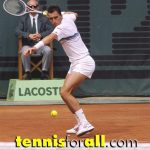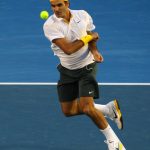There are a lot of factors that contribute to building a great forehand. Moreover, there are a number of important elements throughout the forehand swing that need to happen to ensure proper technique. Without addressing footwork, which in itself is a key contributor in the ability to have a great stroke, here are the some of these points:
• First of you need to learn the limits of the swing…where is the furthest point to which you can take your racquet back?
• How far do you need to turn your body on the last step before you begin to unwind in order to strike the ball?
• How much can you open up your body on contact and where should your racquet be on contact with the ball?
Typically, when I teach (regardless of the tennis level of the individual who I work with), I break it down the process to three main parts of the forehand:
• The side on position
• The take back
• The drop of the racquet
Here are some examples of the positions by some of the best players of all time. Keep in mind these are not exact positions that you would start in to learn the swing; the pictures are here to give everyone a general idea of the concept.
Please keep in mind there are a few other steps that need to happen before the side on position (step takes place) in an actually rally, but in order to learn proper technique, one needs to start at an abbreviated level. Furthermore, once that step is perfected, the next step is having live feeds (instead of hand feeds) and quick racquet feeds.
One starts at the very last step, which is the drop of the racquet…once that segment is comprehended, the next step is the follow trough…from there the take back needs to be practiced…followed by the side on position and subsequently the ready position.
There are a lot little things that need to be constantly adjusted when practicing a new forehand (from these positions) and it is imperative that the coach truly understands all the mechanics of the forehand and why things happen in the swing so that he/she can quickly adjust the stroke to the appropriate position in that transition of the swing. I have often seen forehands (and other tennis swings) that have parts of the swings done appropriately but then they break down somewhere in the process of the stroke. A coach needs to be competent and capable of understand that the swing has its limits and guidelines and if the student stays within those boundaries he/she will have a great swing!
I look forward to replying to questions, hearing your comments, and learning about your experiences!
The end depends on the beginning…
Start your tennis lessons today, start the right way!

















